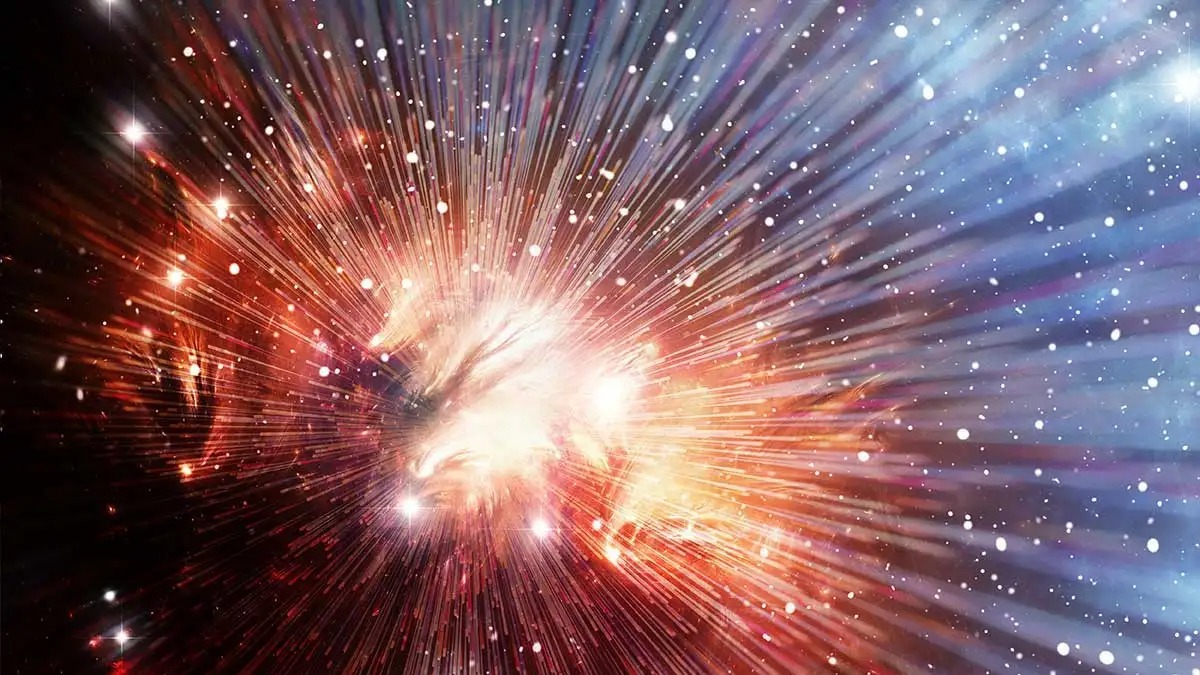What was the Universe like right after the Big Bang? This is one of the unresolved issues of modern physics. And to find the answer, scientists conducted an experiment using Bose–Einstein condensate and sound waves.

The first moments after the birth of the Universe are shrouded in mystery, partly because we cannot look far enough into the past to observe what happened in this ancient era. Scientists believe that the Universe must have experienced a huge expansion immediately after the Big Bang. But it is generally unclear how this rapid inflationary stage unfolded.
Quantum Simulation of the Universe
A team of physicists from Heidelberg University in Germany has created a kind of tiny Universe using a “quantum field simulator” of ultracold atoms. The experiment was able to simulate different versions of curved spacetime. The purpose of the experiment was to study dynamics that may resemble the early Universe under different scenarios. Moreover, scientists had the opportunity to suspend the entire system and analyze it more thoroughly — something that cannot be done with the real Universe.
The success of the experiment indicates that such simulators offer the opportunity to enter unexplored modes in quantum physics. Although no experiment can create conditions directly comparable to those of the early Universe, the new study examines mechanisms that may be somewhat analogous to the physics controlling space-time and the formation of particles in the moments after the Big Bang.
Details of the experiment
For the experiment, about 20 thousand potassium-39 atoms were cooled to temperatures slightly above absolute zero. In this super-cold environment, atoms form a so-called Bose-Einstein condensate, which helps to simulate exotic physical phenomena occurring around black holes or in the early universe. The simulator helped to set up simulations of various theories of cosmic inflation, as well as different types of space-time distortion, for example, flat, spherical and hyperbolic models. The role of light was performed by sound waves passed through the condensate. This allowed us to study the strange physics of each model, which may be similar to those that originated in the early universe.
This experiment coincided with theoretical predictions for various distortions in time and space. Although the tiny Universe simulator has not confirmed or refuted any specific models of the early Universe, it has proven its capability to simulate various conditions of spacetime. Researchers have already identified a number of fundamental questions of quantum physics that can be investigated with the help of future and improved versions of the created simulator.
“I would not say that we are close to discovering the secrets of the Big Bang. But the collaboration between theory and experiments in search of an answer is very motivating to model different tiny universes to solve mysteries,” concluded Nikolas Liebster, an experimental physicist from Heidelberg University.
Earlier we reported on how a supercomputer modeled the universe from the Big Bang to the present day.
According to Nature
Follow us on Twitter to get the most interesting space news in time
https://twitter.com/ust_magazine
